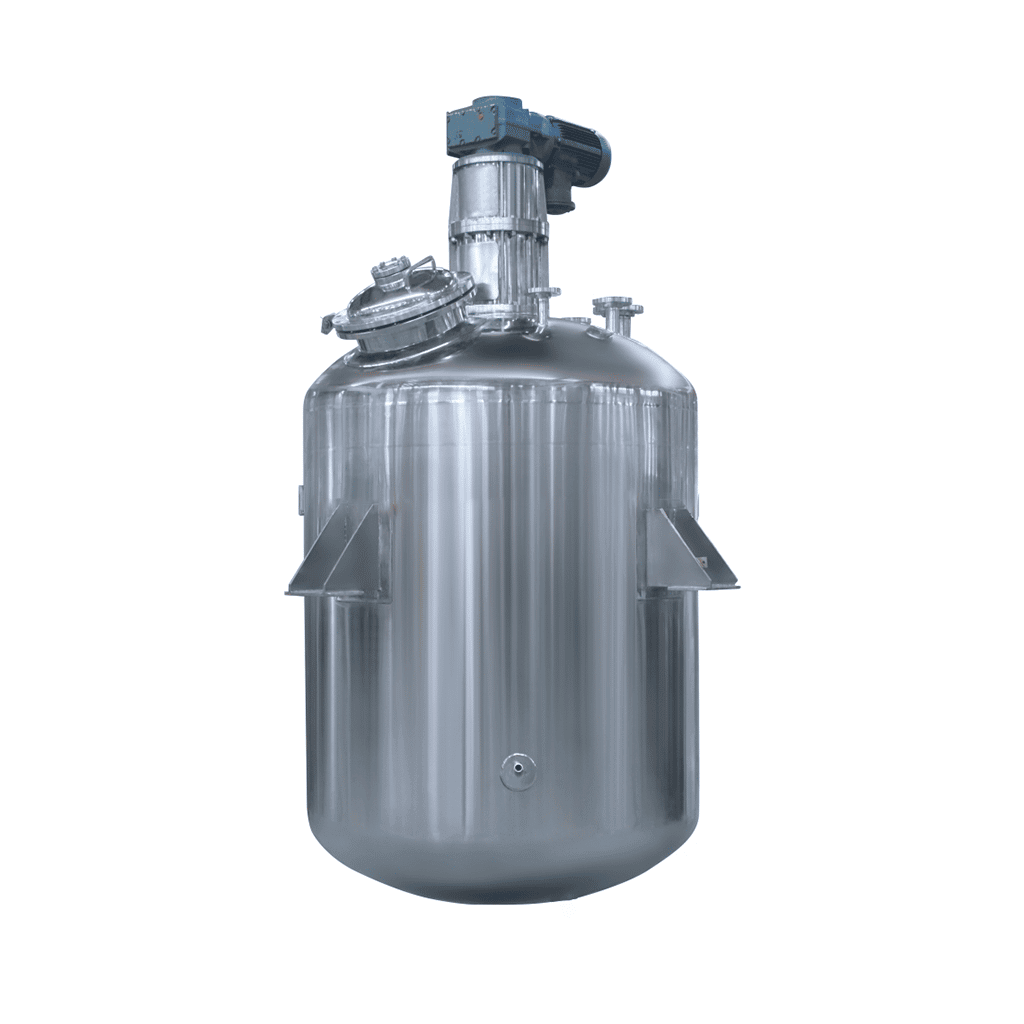
-24-1.jpg)
Stainless Steel Reactor
Stainless Steel Reactor: used in dairy products, sugar, beverages, and other fields
Material
stainless steel (316, 304)
Capacity (L)
10-10000+
Mixing system
anchor, paddle, frame and others
Heating system
electric heating, oil heating and others
A stainless steel reactor is a stainless steel container equipment. The stainless steel reactor consists of a kettle body, a kettle lid, a stirrer, a jacket, a bracket, a transmission device, a shaft seal device, etc. Materials and openings can be made according to user needs and process requirements. Stainless steel reactors are mainly used for stirring, homogenizing, and mixing storage of dairy products, sugar, beverages, food, and various pharmaceuticals.
Request a quoteA stainless steel reactor is a type of chemical reactor. The raw materials, intermediates, and even products used in production are all flammable, explosive, and corrosive substances, so fire prevention issues need to be solved during use.

The main causes of fires such as equipment leakage often originate in the design stage, so it is very important to do a good job in fire prevention during the design stage. First, the design, model selection, material selection, layout, and installation of stainless steel reactors should comply with national norms and standards. Strictly control the design, select the corresponding high or low temperature, corrosion resistance, and pressure requirements according to the characteristics of different processes, use advanced technology for manufacturing and installation, conduct strict fire audits, and pass strict debugging and acceptance.

Implement preventive measures for hot work in stainless steel reactors
1.Disassemble and take away. If possible, remove the equipment, pipes, and accessories that need to be dismantled and moved out of the fire protection area from the main body, move them to a safe place for hot work, and put them back to their original places after the fire is completed.
2.Isolation cover. Effectively isolate thermal equipment, pipelines and their accessories, and related operating systems, such as adding blind plates, sealing heads, or removing a section of pipelines to isolate flammable and explosive materials and media. Gas enters the hot operating point.
3.Clean up the scene. Cleaning up the scene before a fire breaks out is the most basic requirement. Before a fire breaks out, flammable and explosive items around hot spots should be moved to a safe place and the scene should be cleaned up.
4.Check and confirm. After making relevant preparations, be sure to check and confirm. This level is very important.
Strengthen safety training for stainless steel reactors
Employees in the chemical production industry should be relatively stable, strengthen the technical and operational discipline of employees, formulate operating procedures, and strictly implement them. Improve the professional quality level and production operation skills of employees. Develop accident emergency plans and conduct drills to improve employees’ ability to respond to accidents.
Safety equipment for stainless steel reactors
1. Fire extinguishing equipment. It includes a safety liquid seal, water seal well, flame arrester, one-way valve, flame arrester, etc. Its function is to prevent flames from breaking into stainless steel reactors and pipelines or to prevent flames from spreading at the same time.
2.Explosion-proof pressure relief equipment. Including safety valves, bursting discs (explosion-proof discs), vent pipes, etc., which are installed on pressure vessels, pipelines, and other production equipment to play the role of pressure relief and explosion prevention.
3.Spark arrester. Installed equipment and devices that generate sparks to prevent sparks from flying out and igniting combustibles.
4.Automatic detector. Used to detect the concentration and temperature of combustible gases.




